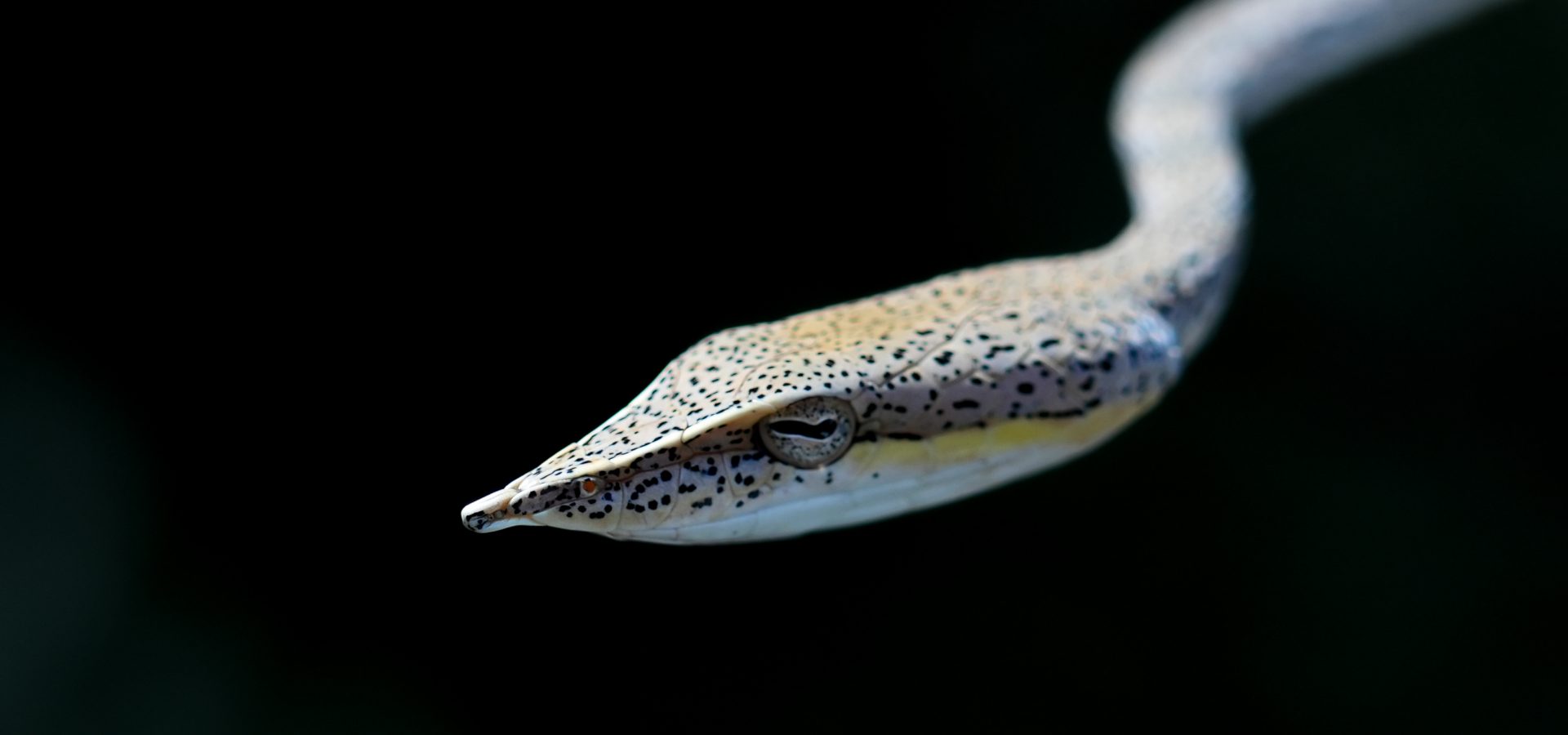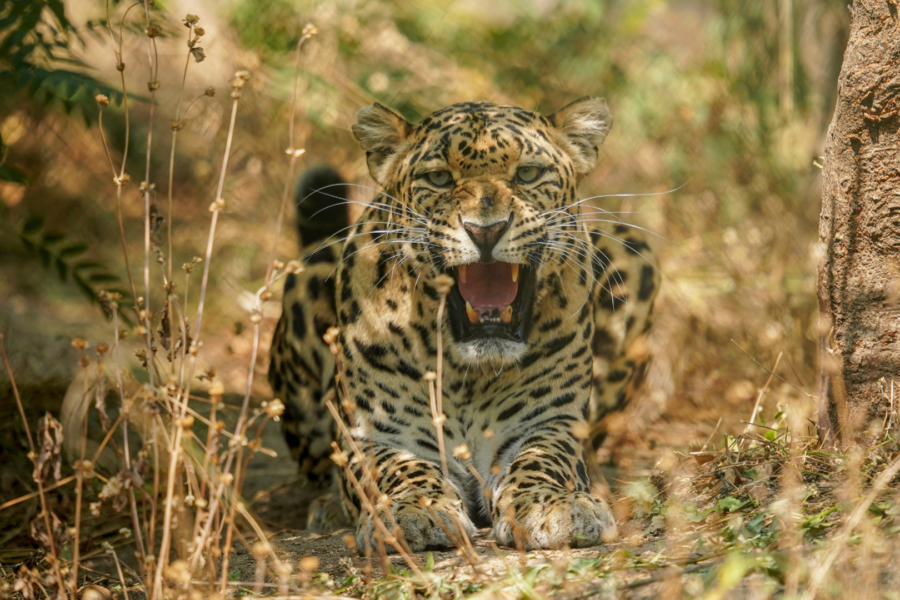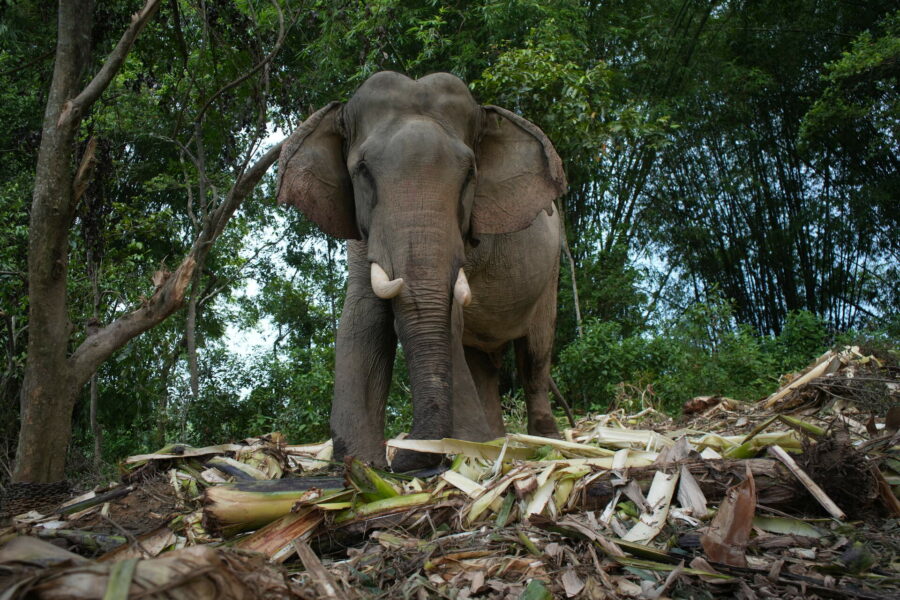Picture this: It’s a warm Sunday morning, and you’re in your backyard, tending to your recently bloomed flowers, listening to the chorus of chirping birds. Suddenly, you spot an unexpected guest gliding through the lush greenery — it’s a snake! Panic sets in, and your first instinct is to reach out for help. But hold on a second, does the snake really need rescuing, or is it simply navigating? When exactly should you interfere in such an encounter?
On the occasion of World Snake Day, let’s get to know when these misunderstood reptiles truly need a helping hand! Here are a few scenarios in which a snake may need help.
In Case of an Injury
If you come across a snake that appears to be injured with wounds or cuts, immediately seek professional help. A local wildlife rehabilitator or a forest department official can also determine if the spotted snake is suffering from a broken bone or any illness.
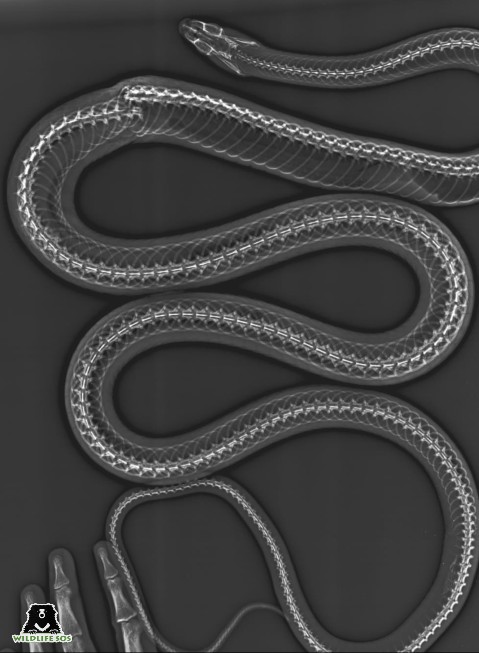
Recently, workers at Beejom Farm in Noida, Uttar Pradesh, found an Indian rat snake slithering sluggishly through the field. Upon close inspection, they realised that the snake had been attacked by feral dogs and thus had developed severe injuries. Well aware of the next steps, they immediately contacted the Wildlife SOS 24×7 helpline, and the team rushed to the rescue. After careful extrication, the snake was taken for medical examination and an X-ray revealed a broken spine. The injured rat snake is still under our care and shall be released after complete recovery.
When Trapped in Peril
Being extremely versatile, snakes can sometimes make their way into the smallest of structures such as pipes, nets, cupboards, or fences. If they are found inside a house, in vehicles, or in a highly populated area, they could cause fear among the public. If you encounter a reptile that is visibly trapped and unable to escape on its own, it is essential to connect with professional help to prevent conflict.
Wildlife SOS frequently rescues wild animals including snakes from challenging circumstances. In May 2023, our team was alerted about a red sand boa snake that was found in a perilous situation: it was stuck in the spare parts of a motor pump! The rescuers used a metal cutter to sever the motor pump rings that the snake was trapped in, and the snake was released into its natural habitat after medical observation.
Potential Human-Snake Conflict
In situations where snakes and humans come into conflict, it is essential to prioritise safety for both parties. When a snake is in close proximity to a human-dominated area and its presence poses a potential danger, it is highly recommended to contact professionals to handle the situation with caution.
Last month, a three-foot-long Indian rat snake was spotted by a visitor near the Taj Mahal. Stunned to find the reptile floating inside an open well, they promptly contacted our 24-hour helpline. The team arrived at the spot, and to rescue the snake, a secure transport container was lowered into the well. The snake was gently guided into this carrier and was released back into the wild soon after it was brought up.
During the winter of 2022, an unexpected snake was noticed on the side of the road near a coal shop in Srinagar. Upon reaching the location, our team identified the reptile as a spectacled cobra, one of the ‘Big Four’ venomous snakes of India! Found in a comatose state, the reptile was kept under medical observation till it regained energy. It was speculated that the cobra had reached the city in a cargo truck from Jammu.
Scenarios of Mistaken Beliefs
In the month of Shravan, snake charmers take advantage of people’s devotion to Lord Shiva, who is often depicted with a snake around his neck. Thousands of snakes are poached from the wild and are displayed at gatherings. These snakes are brutally defanged, confined, and deprived of basic necessities. Their mouths are sewn shut, leaving only a small gap to drink the milk offered by devotees. Unknown to many, snakes suffer from dehydration and cannot digest milk. This damages their system and leads to a painful death. Cobras, in particular, have their venom glands removed to prevent bites.
These practices are strictly prohibited under the Indian Wildlife (Protection) Act, 1972. In case a snake is seen in the above scenarios, it is strongly advised to inform the nearest police station or forest department for timely intervention. Each year, our anti-poaching team carries out rescue drives with the forest department, especially in Uttar Pradesh. Snakes kept in abhorrent conditions are seized each year and are provided with the necessary medical treatment before being released back into the wild.
Venomous Snakes Encounters
With over 270 snake species inhabiting India, nearly 60 are venomous. Each of them possesses a venom gland, which synthesises and stores a myriad of toxins. If one comes across a venomous snake, it is crucial to prioritise safety above all else. Here are some things to consider:
- Maintain distance: Keep a safe distance from the snake. Avoid approaching or cornering the reptile and allow it to move away. Don’t panic but keep an eye on its movement. It is important to not scare it.
- Do not attempt any DIY act: Avoid handling or removing a wild animal by yourself, and reach out to a trained professional instead. Mishandling a venomous reptile can lead to serious injuries or can even be fatal.
- Seek professional assistance: If you encounter a venomous snake in a residential area, near public spaces, or in a situation where it poses a risk to humans or other animals, contact local authorities or a wildlife rescue organisation like Wildlife SOS.
- Familiarise yourself with common species: Learn about the common species in your area, as this information can be important for the safety of both humans and the animal. If you encounter one, take note of its appearance, patterns, and behaviour for identification purposes.
- Educate and inform: An encounter could be an opportunity to educate others about the importance of reptiles, understanding their behaviour, and implementing proper safety measures to coexist with them.
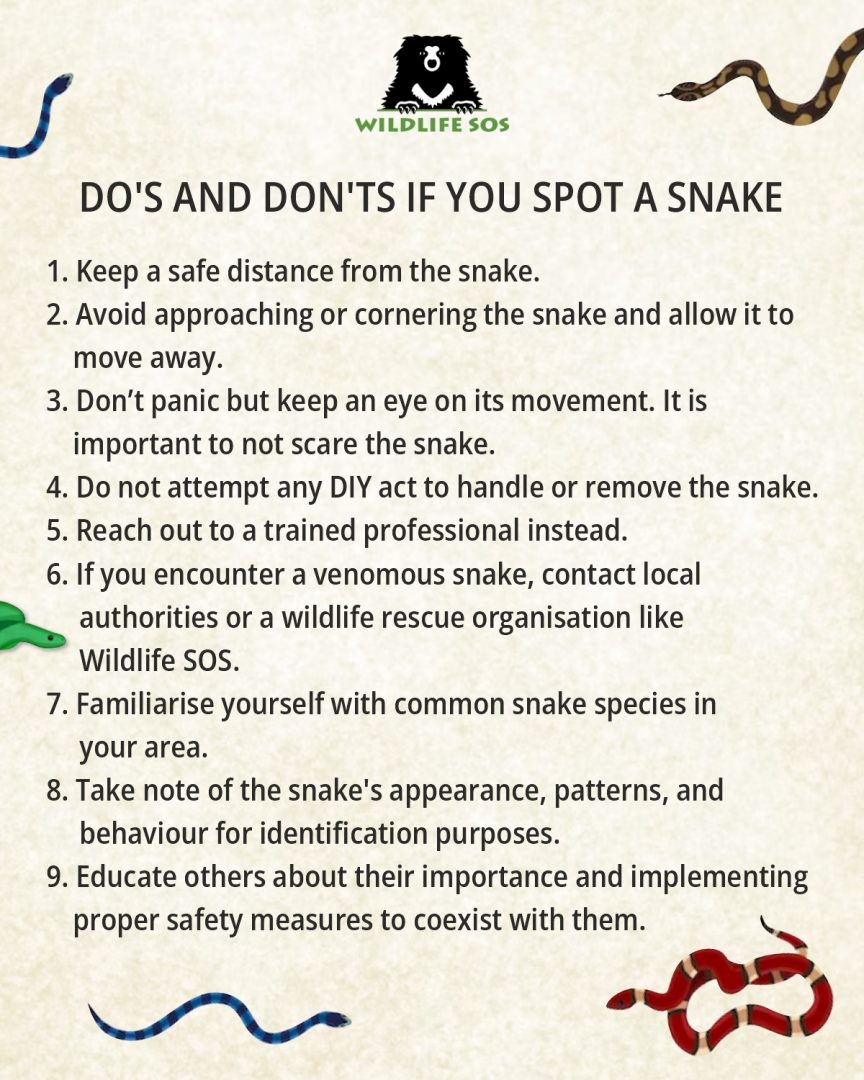
Times When You Need Not Interfere
Humans share spaces with several animals, including reptiles. Encountering a snake in your vicinity may create panic and lead to a conflict situation. However, it is vital to note that rescue and removal aren’t necessary in all scenarios. Here are some instances where one needs to keep calm and let them be:
- In its natural habitat: If you spot an animal in its natural environment, such as in a forest, field, or wilderness, it is best to remain at a safe distance and allow it to continue its natural activities, undisturbed.
- Basking in the sun: Snakes are ectotherms, which means they rely on external sources to regulate their body temperature. So, they often bask in the sun or resting in a coiled position to manage their body heat. If you come across a reptile in such positions, it would be best to admire them from afar!
- In a tree: Snakes climbing trees or perched in elevated spots are usually displaying natural behaviour. In such a spotting, one can calmly, yet cautiously, move away so as to not alarm the reptile to invite an adverse reaction.
- Taking natural shelter: If a snake has found a natural shelter, such as a hollow log, rock crevice, or burrow, it is best to let it remain undisturbed. These shelters provide protection to them and are vital for the snake’s survival.
- Being non-venomous: If you encounter a non-venomous species, it is less likely to pose a deadly threat. Many of these snakes play important roles in controlling animal populations and maintaining ecological balance. Only a small proportion of the native species in India are venomous in nature, hence, awareness is key to planning any course of action.
Wildlife SOS to the Rescue
Wildlife SOS runs a 24-hour hotline in several regions across India. Expert rescuers have managed to rescue venomous snakes like Russell’s viper and Indian cobra, from highly difficult situations.
If you come across any wild animal in distress, please alert our rescue team on these numbers as soon as possible:
Delhi NCR: +91-9871963535
Agra and Mathura, Uttar Pradesh: +91-9917109666
Vadodara, Gujarat: +91-9825011117
Jammu and Kashmir: + 91-7006692300
To keep up with all of our unique reptile rescues, make sure to follow our Wildlife SOS Reptiles group on Facebook!

